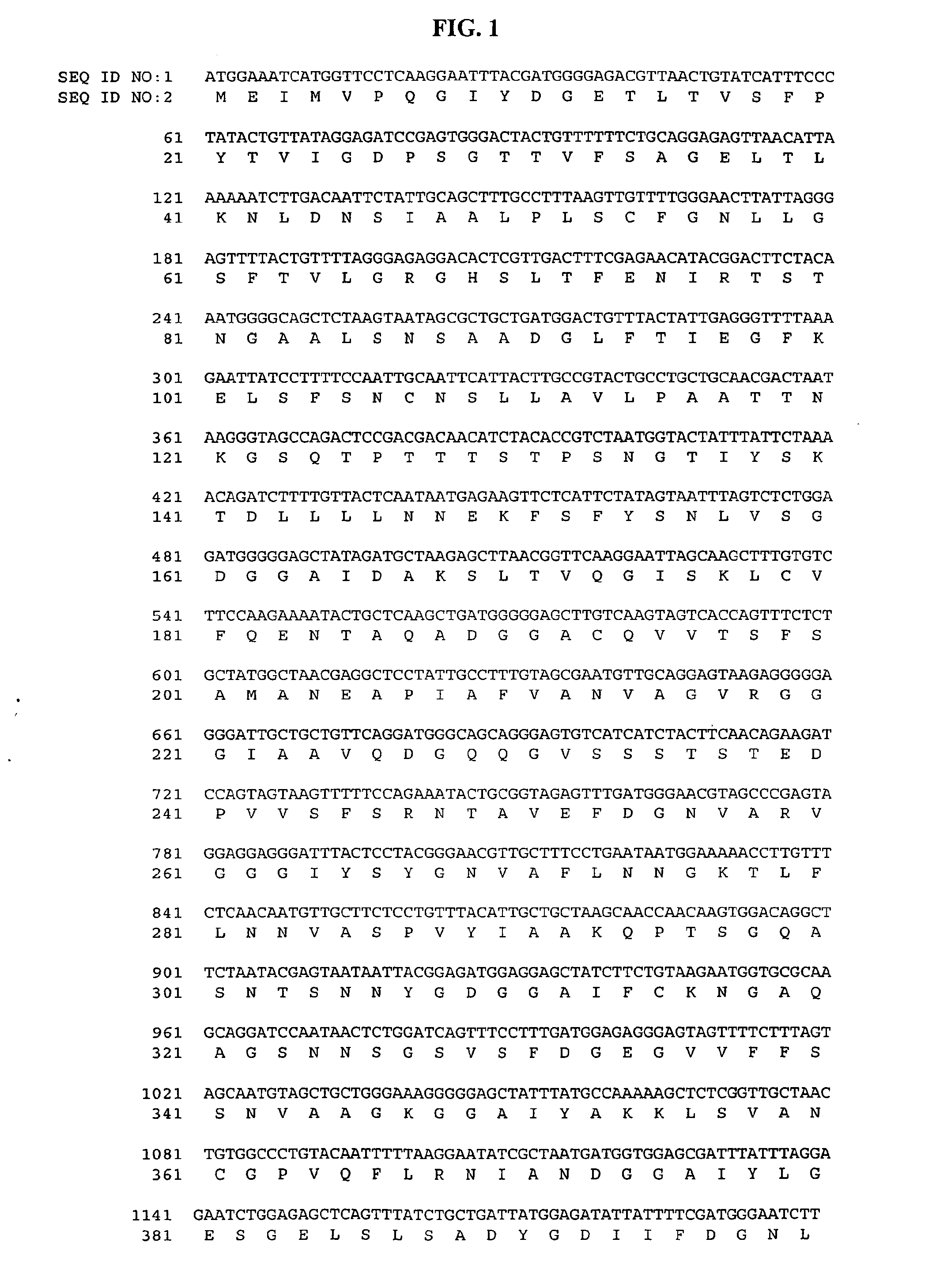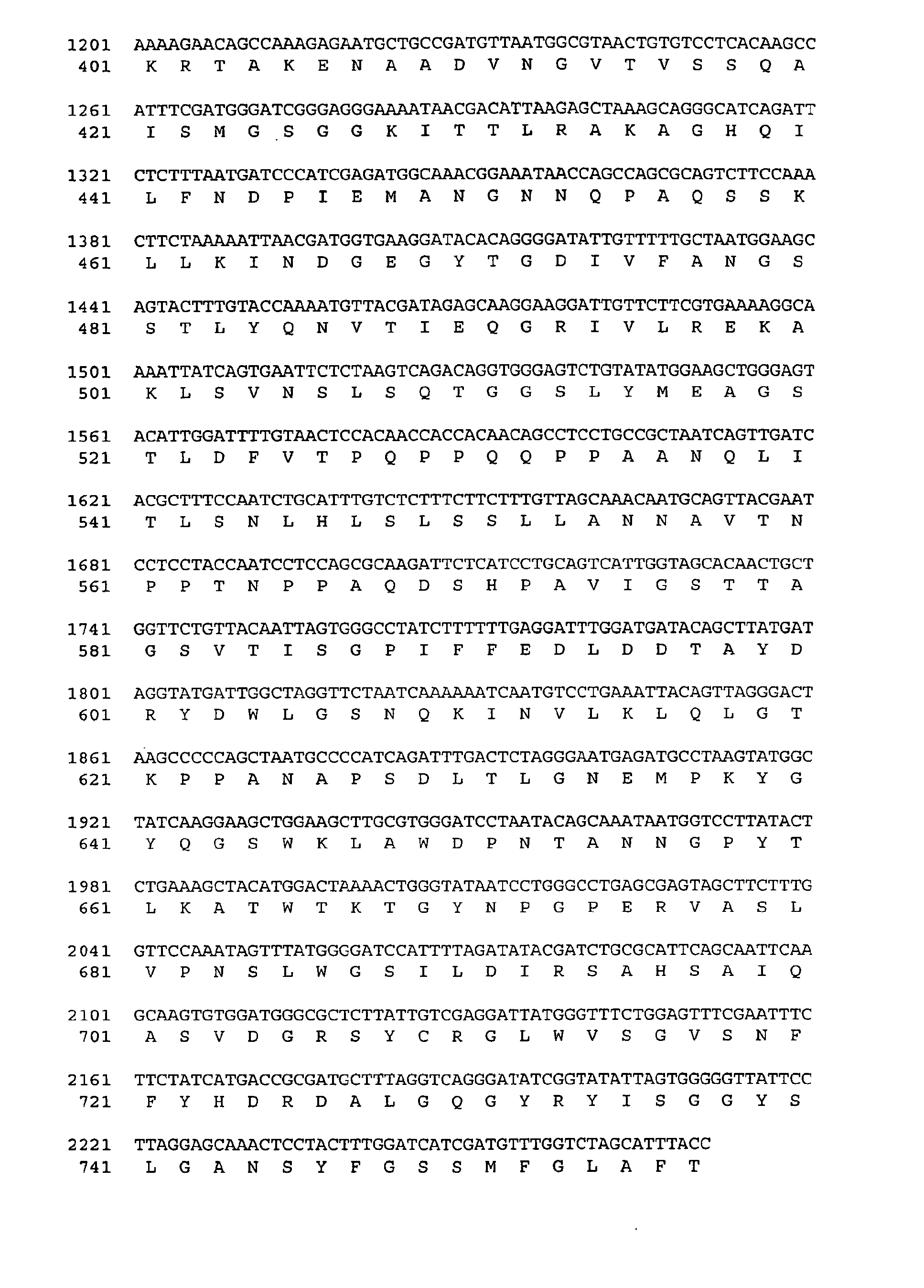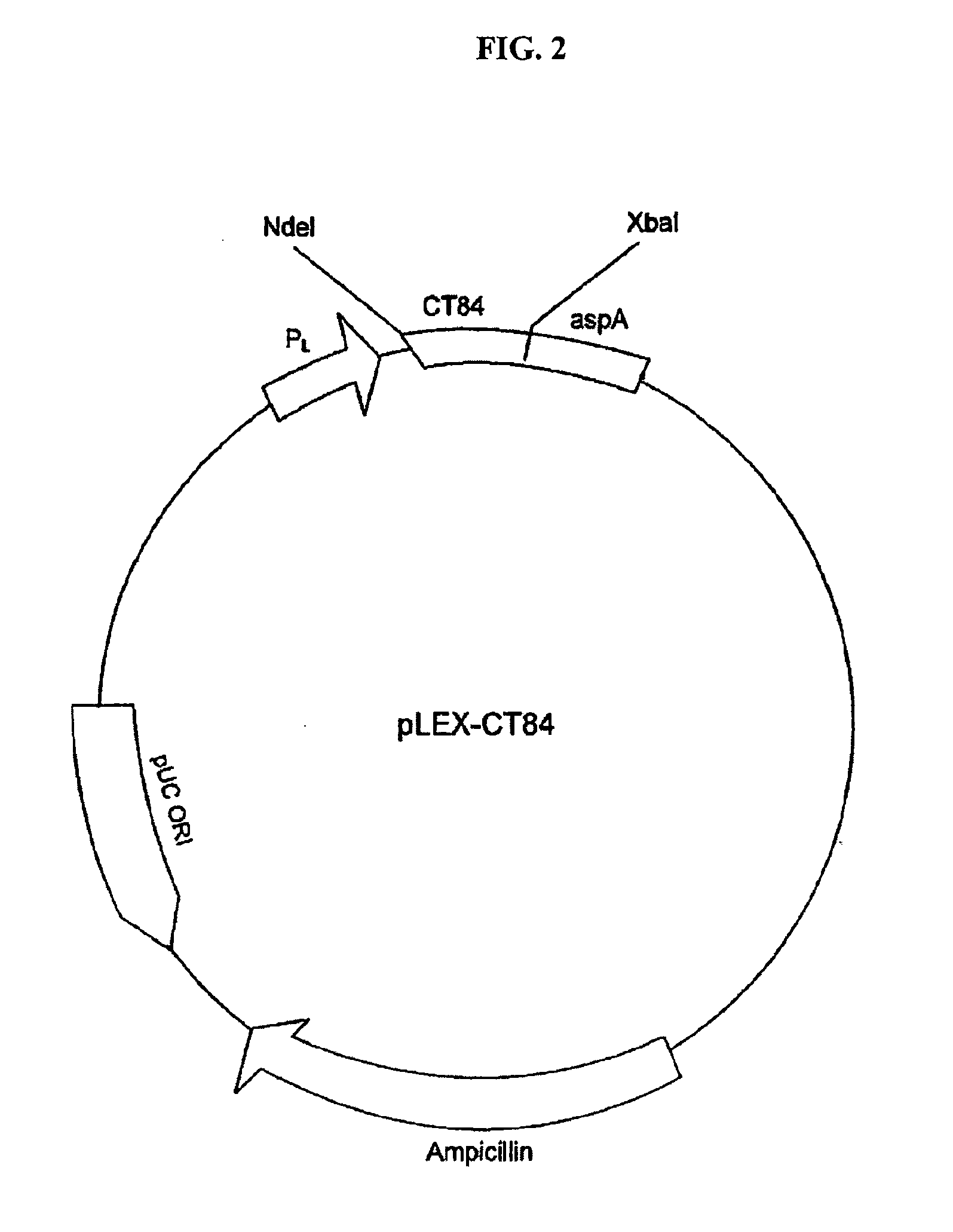Vaccines Against Chlamydia Infection
a technology of chlamydia and vaccine, applied in the field of pharmaceutical composition and vaccine, can solve the problems of difficult development of a vaccine to chlamydia /i>, difficult production of transmembrane proteins, and difficult production of subunit vaccines to antigenic variable regions, etc., to facilitate isolation and/or purification, and increase stability
- Summary
- Abstract
- Description
- Claims
- Application Information
AI Technical Summary
Benefits of technology
Problems solved by technology
Method used
Image
Examples
example 1
Construction of pET15b-CT84 Plasmid
[0221]The CT84 gene fragment (SEQ ID NO:1) was PCR amplified then inserted into a pET plasmid, resulting in a pET15b-CT84 plasmid which encodes a His-tagged CT84 polypeptide. Specifically, pET15b-CT84 was created by inserting the CT84 gene into pET15b-Spe, a vector derived from pET15b (Novagen). The pET15b-Spe vector is the same as pET15b, except that an extra Spe1 restriction site was added in-frame immediately upstream of BamH1 using common molecular biology techniques. The pET15b-Spe vector has a His-tag upstream of the multiple cloning sites. The CT84 gene, which comprises amino acid 29 to 784 of CT110, was PCR-amplified from the purified CT110 plasmid DNA using the following primers:
(SEQ ID NO: 24)5′- GGGAATTCCCATATGGAAATCATGGTTCCTCAAGGAATTTAC -3′and(SEQ ID NO:25)5′- CGACTAGTTTATTAGGTAAATGCTAGACCAAACATCG -3′
[0222]The PCR product was restricted with Nde1 and Spe1 and ligated into pET15b-Spe vector that had been restricted with Nde1 and Spe1, re...
example 2
Construction of pET15b-CT57 Plasmid
[0223]The CT57 gene fragment (SEQ ID NO:8) was PCR amplified then inserted into pET15b plasmid, resulting in a pET15b-CT57 plasmid which encodes a His-tagged CT57 polypeptide. Specifically, the CT57 gene was cloned into pET15b-Spe. The CT57 gene was PCR-amplified from the purified CT110 plasmid DNA using the following primers:
(SEQ ID NO: 26)5′- GGGAATTCCCATATGGCTCAAGCTGATGGGGGAGCTTGTC -3′and(SEQ ID NO: 27)5′- CGACTAGTTTATTAATGCGCAGATCGTATATCTAAAATGG -3′.
[0224]The PCR product was restricted with Nde1 and Spe1 and ligated into pET15b-Spe vector that had been restricted with Nde1 and Spe1, resulting in a pET15b-CT57 plasmid in which the plasmid encoded a His-tagged CT57 polypeptide. The pET15b-CT57 plasmid was then transformed into E. coli strain BL21(DE3) or BL21(DE3)pLysS. Transcription of the CT57 gene in the pET15b-CT57 plasmid was controlled by the T7 promoter. The His-tagged CT57 protein was expressed by inducing the BL21(DE3) host cells with IP...
example 3
Construction of pET15b-CT40 Plasmid
[0225]The CT40 gene fragment (SEQ ID NO:6) was PCR amplified then inserted into pET15b plasmid, resulting in a pET15b-CT40 plasmid which encodes a His-tagged CT40 polypeptide. Specifically, the CT40 gene was cloned into pET15b-Spe. The CT40 gene was PCR amplified from the purified CT110 plasmid DNA using the following primers:
(SEQ ID NO: 28)5′- GGGAATTCCCATATGATTTTCGATGGGAATATTAAAAGAACAGCC -3′and(SEQ ID NO: 17)5′- CGACTAGTTTATTAGGTAAATGCTAGACCAAACATCG -3′.
[0226]The PCR product was restricted with Nde1 and Spe1 and ligated into pET15b-Spe vector that had been restricted with Nde1 and Spe1, resulting in a pET15b-CT40 plasmid in which the plasmid encoded a His-tagged CT40 polypeptide. The pET15b-CT40 plasmid was then transformed into E. coli strain BL21(DE3) or BL21(DE3)pLysS. Transcription of the CT40 gene in the pET15b-CT40 plasmid was controlled by the T7 promoter. The His-tagged CT40 protein was expressed by inducing the BL21(DE3) host cells with ...
PUM
| Property | Measurement | Unit |
|---|---|---|
| temperatures | aaaaa | aaaaa |
| temperatures | aaaaa | aaaaa |
| temperatures | aaaaa | aaaaa |
Abstract
Description
Claims
Application Information
 Login to View More
Login to View More - R&D
- Intellectual Property
- Life Sciences
- Materials
- Tech Scout
- Unparalleled Data Quality
- Higher Quality Content
- 60% Fewer Hallucinations
Browse by: Latest US Patents, China's latest patents, Technical Efficacy Thesaurus, Application Domain, Technology Topic, Popular Technical Reports.
© 2025 PatSnap. All rights reserved.Legal|Privacy policy|Modern Slavery Act Transparency Statement|Sitemap|About US| Contact US: help@patsnap.com



